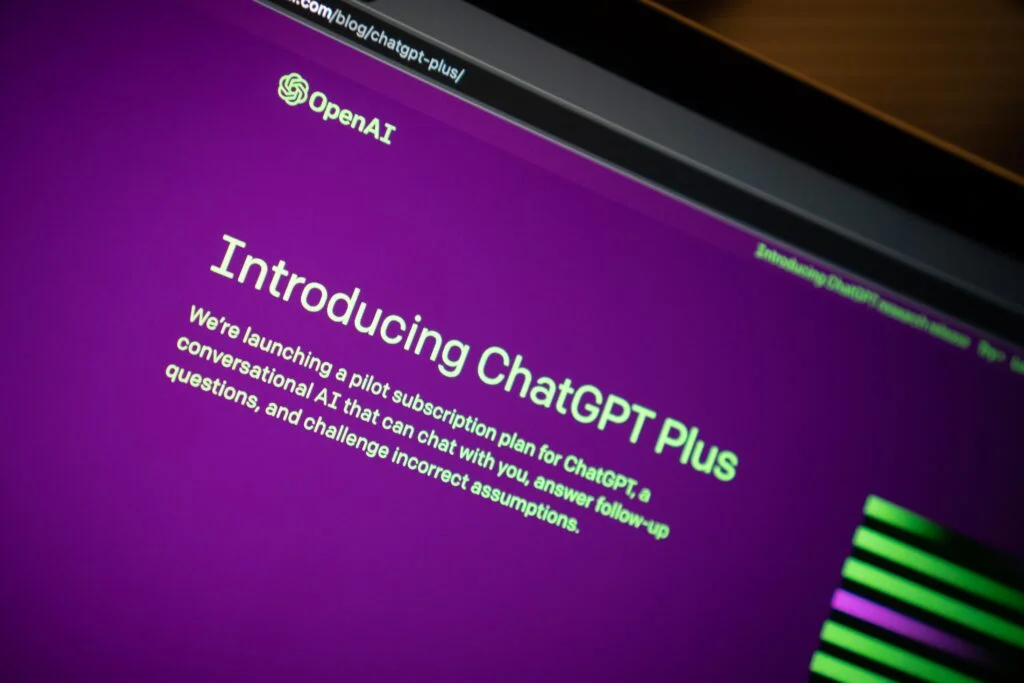Imagine having a tool that could revolutionize your marketing campaigns, allowing you to tap into the power of artificial intelligence and create engaging content effortlessly. Look no further than ChatGPT prompts. In this article, we’ll explore how to effectively utilize ChatGPT prompts for successful marketing campaigns. By leveraging the capabilities of this AI-powered tool, you can captivate your audience, boost brand awareness, and drive conversions like never before. Get ready to unlock the potential of ChatGPT prompts and take your marketing strategies to new heights.
Understanding ChatGPT Prompts
What are chatGPT prompts?
ChatGPT prompts are a method of interacting with OpenAI’s language model, GPT-3, specifically designed for chat-based conversations. By providing a conversational prompt, users can engage in back-and-forth exchanges with the model to receive a response in a natural and human-like manner.
How does chatGPT work?
ChatGPT works by utilizing deep learning techniques to generate responses based on the given prompt. It uses a large dataset of chat conversations to learn patterns and context, allowing it to understand and respond to a wide variety of queries and statements. The model generates responses based on probability and relevance, with the aim of providing coherent and meaningful dialogue.
Why are chatGPT prompts helpful for marketing campaigns?
ChatGPT prompts offer several advantages for marketing campaigns. They enable companies to engage with their customers in real-time, creating a personalized and interactive experience. By leveraging the conversational abilities of chatGPT, marketers can better understand customers’ needs, address their concerns, and drive conversions. In addition, prompts can be used across various marketing channels, from emails to social media campaigns, enhancing customer engagement and ultimately boosting marketing effectiveness.
Creating Effective ChatGPT Prompts
Identifying campaign goals
Before creating prompts, it’s essential to identify the specific goals of your marketing campaign. Whether it’s generating leads, increasing brand awareness, or driving sales, understanding your objectives will help tailor the prompts to align with your desired outcomes.
Understanding target audience
Knowing your target audience is crucial for crafting effective prompts. Research and analyze your customer demographics, preferences, and pain points. This will enable you to ask relevant questions and provide tailored responses that resonate with your audience, leading to higher engagement and conversion rates.
Crafting specific and clear prompts
To facilitate meaningful conversations, it is important to create prompts that are specific and clear. Avoid vague or open-ended questions that may lead to ambiguous responses. Instead, ask questions that require specific information or actions, guiding the conversation towards the desired outcome.
Incorporating brand personality
Your brand’s personality plays a vital role in attracting and connecting with customers. Incorporate the tone, voice, and values of your brand into the prompts to create a consistent and engaging experience. Whether you aim for a friendly, professional, or humorous approach, aligning the prompts with your brand identity will enhance customer engagement and brand loyalty.
Using persuasive language
Persuasive language can make a significant impact on your marketing efforts. By using compelling and persuasive wording in your prompts, you can influence customers’ decisions and actions. Utilize techniques such as highlighting benefits, creating a sense of urgency, and addressing objections to effectively guide customers through the conversion funnel.

Developing Engaging Conversations
Navigating open-ended conversations
Open-ended conversations are an opportunity to explore your customers’ needs and preferences. Utilize chatGPT prompts to ask open-ended questions that invite customers to share their thoughts, opinions, and experiences. By actively listening and responding to their input, you can establish a strong rapport and gain valuable insights that enable personalized marketing strategies.
Encouraging customer participation
To steer conversations towards engagement, encourage active customer participation. Prompt customers to provide feedback, suggestions, or even share user-generated content. This involvement not only fosters a sense of community but also helps build trust and loyalty among your customer base.
Personalizing interactions
Personalization is key to creating a memorable customer experience. With chatGPT prompts, you can collect customer data through conversational interactions and leverage that information to personalize subsequent responses. Use customer names, previous purchase history, or tailored recommendations to enhance the sense of individual attention and care.
Utilizing humor and storytelling
Humor and storytelling are powerful tools for capturing attention and creating an emotional connection. Incorporate humor into your prompts to entertain and engage customers. Storytelling can also be used to evoke emotions, share brand narratives, and demonstrate how your product or service has positively impacted other customers. These techniques will make your prompts more memorable and impactful.
Optimizing for Conversion
Qualifying leads through prompts
Identifying qualified leads is crucial for efficient marketing campaigns. Craft chatGPT prompts that uncover essential information about potential customers, such as their needs, preferences, and budget. By qualifying leads in the early stages, you can focus your resources on those most likely to convert, increasing the overall efficiency of your marketing efforts.
Identifying pain points
Understanding your customers’ pain points allows you to address their concerns effectively. Use chatGPT prompts to discover the challenges your customers face and the obstacles preventing them from converting. Armed with this information, you can tailor your marketing messages and offers to alleviate these pain points, improving the conversion rates.
Highlighting product benefits
ChatGPT prompts provide an opportunity to effectively communicate the benefits of your product or service. Highlight key features and advantages in a conversational manner, emphasizing how your offering solves customers’ problems or enhances their lives. By highlighting these benefits, you can increase customers’ understanding of your product and motivate them to take action.
Addressing objections
Customers often have reservations or objections before making a purchase. Use chatGPT prompts to proactively address common objections and provide reassurance. By promptly and clearly addressing concerns, you can alleviate doubts and build trust, ultimately increasing the likelihood of conversion.
Creating urgency
Creating a sense of urgency is a proven technique to drive conversions. Incorporate time-limited offers, scarcity-based messaging, or limited stock notifications in your chatGPT prompts. By emphasizing the urgency to act, you can motivate customers to make quick decisions, resulting in increased conversion rates.

Ensuring Consistency and Accuracy
Providing clear and accurate information
Accuracy is paramount in maintaining trust and credibility. Ensure that the information shared through chatGPT prompts is accurate, up-to-date, and aligned with your brand’s messaging. Verify the responses generated by the model to minimize any potential misinformation or inaccuracies.
Implementing quality control measures
To ensure consistency and quality in your chatGPT prompts, implement robust quality control measures. Regularly review and evaluate the responses generated by the model, checking for accuracy, relevance, and adherence to brand guidelines. Continuous monitoring and adjustments will help maintain the desired level of quality and consistency.
Avoiding biased responses
AI models like chatGPT can inadvertently generate biased responses. It is crucial to develop prompts that minimize biases and avoid promoting discrimination or unfair practices. Train the model using diverse data and carefully assess the outputs, refining prompts to prioritize fairness, inclusivity, and respect for all customers.
Training chatGPT for accuracy
Training chatGPT for accuracy is a dynamic process. Continuously feed the model with new, relevant data to improve its understanding and responsiveness. By fine-tuning the model with specific prompts and responses, you can enhance its accuracy and effectiveness, aligning it more closely with your marketing objectives.
Monitoring and Analyzing Performance
Tracking key metrics
Monitoring key metrics is essential to assess the performance of your chatGPT prompts. Track metrics such as conversion rates, customer engagement, response time, and customer satisfaction. These metrics offer valuable insights into the effectiveness of your prompts and enable data-driven optimizations.
Analyzing customer feedback
Customer feedback is a valuable source of insights for improving your chatGPT prompts. Encourage customers to provide feedback on their experience with the prompts, their satisfaction levels, and suggestions for improvement. Analyze this feedback and use it to refine and iterate upon your prompts to better meet customer expectations.
Iterating and improving prompts
Continuous improvement is crucial for enhancing the impact of your chatGPT prompts. Actively analyze performance metrics, customer feedback, and engagement rates. Identify areas of improvement and iteratively refine your prompts, adjusting language, tone, or content to better resonate with your target audience and drive desired outcomes.
A/B testing
A/B testing is a powerful method to optimize your chatGPT prompts. Create multiple versions of prompts, varying factors such as language, word choice, or call-to-action, and test them against each other. By evaluating the performance of different prompts, you can determine the most effective ones and implement them for maximum impact.

Integrating ChatGPT Prompts into Marketing Channels
Using prompts in email marketing
Email marketing presents an ideal platform to incorporate chatGPT prompts. Tailor your email content to include conversational prompts that encourage recipients to engage and respond. This interactive approach can drive higher open rates, click-through rates, and ultimately, conversions, making your email campaigns more engaging and effective.
Incorporating prompts in social media campaigns
Social media platforms offer a vast audience and high levels of engagement. Integrate chatGPT prompts into your social media campaigns by posing questions or encouraging discussions in post captions or comments. This interactive element can captivate users’ attention, generate conversations, and amplify the reach and impact of your social media efforts.
Implementing prompts on websites and landing pages
Websites and landing pages are pivotal points in the customer journey. Integrate chatGPT prompts into these pages to offer immediate assistance, address customer queries, and guide them towards conversions. By providing instant responses and personalized interactions, you can create a seamless and engaging experience for website visitors.
Leveraging prompts in chatbots and live chats
Chatbots and live chats are becoming increasingly popular tools for customer support and engagement. Utilize chatGPT prompts to power these conversational interfaces, allowing customers to interact with your brand in real-time. Chatbots equipped with chatGPT can provide immediate responses, gather customer information, and guide users through the decision-making process, enhancing customer satisfaction and conversion rates.
ChatGPT Prompt Best Practices
Keeping messages concise
Conciseness is key when crafting chatGPT prompts. Keep your messages short and to the point, avoiding lengthy or convoluted sentences. Concise prompts are more likely to be processed accurately by the model, leading to clearer and more effective responses.
Taking into account limitations and risks
While chatGPT is a powerful tool, it has limitations and risks. Be aware that the model may generate incorrect or inappropriate responses, as it operates based on probability. Account for these limitations by implementing robust review and quality control processes to minimize risks associated with misinformation or biased outputs.
Engaging in ethical AI usage
Ethical considerations are crucial when utilizing AI models like chatGPT. Be mindful of the impact of your prompts and responses on customers, ensuring that they respect privacy, uphold fairness, and avoid harm. Adopt responsible AI practices, continuously evaluate and improve your prompts, and prioritize the well-being and satisfaction of your customers.
Ensuring data privacy
Data privacy is of utmost importance in all marketing activities. With chatGPT prompts, pay close attention to the collection and storage of customer data. Implement robust security measures, inform customers about data usage and storage, and adhere to relevant data protection regulations to establish trust and protect customer privacy.
Providing fallback options
ChatGPT prompts may not always provide accurate or satisfactory responses. To account for this, include fallback options such as human support or the ability to escalate to a higher level of assistance. Fallback options ensure a seamless customer experience, preventing frustration or dissatisfaction when the model encounters limitations.

Overcoming Challenges and Limitations
Overcoming language and cultural barriers
Language and cultural barriers can pose challenges when using chatGPT prompts in marketing campaigns. Ensure that your prompts are clear and avoid jargon or cultural references that may be misunderstood. Consider localization or translation services to cater to diverse audiences, ensuring your prompts effectively engage and resonate with customers from different backgrounds.
Handling complex or technical queries
Complex or technical queries may require specialized knowledge or expertise. Train your chatGPT model with domain-specific data to enhance its understanding and response quality. Incorporate prompts that direct customers towards appropriate resources or provide alternative channels for in-depth technical support, ensuring their needs are addressed effectively.
Dealing with ambiguous or inappropriate responses
Ambiguity and inappropriate responses are potential risks when using chatGPT prompts. Employ rigorous quality control measures to filter and review the generated responses. Implement user feedback loops to detect and address problematic outputs and adapt your prompts accordingly. Monitoring and refining prompts play a vital role in mitigating such risks.
Case Studies: Successful Marketing Campaigns Using ChatGPT Prompts
Case study 1: X Company’s personalized email campaign
X Company successfully implemented chatGPT prompts in their email campaign. By incorporating personalized and engaging questions, they achieved higher open rates and improved click-through rates. The interactive nature of the prompts encouraged recipients to respond, leading to increased customer engagement and conversions.
Case study 2: Y Company’s chatbot-driven lead generation
Y Company utilized chatGPT prompts in their chatbot for lead generation. By designing prompts that qualified potential leads, they were able to identify high-quality prospects efficiently. The chatbot engaged users in meaningful conversations, collecting key information and guiding them towards conversion, resulting in a significant increase in lead generation and conversion rates.
Case study 3: Z Company’s social media engagement
Z Company leveraged chatGPT prompts in their social media campaigns. By posing thought-provoking questions and encouraging discussions, they fostered a sense of community and engagement. This approach not only increased their social media reach but also strengthened brand loyalty and customer satisfaction.
In conclusion, chatGPT prompts offer a powerful tool for marketers to engage with customers, drive conversions, and enhance overall marketing effectiveness. By understanding campaign goals, tailoring prompts to the target audience, and utilizing persuasive language, marketers can develop engaging conversations that optimize for conversion. It is essential to ensure consistency, accuracy, and ethics in the use of chatGPT prompts, while continuously monitoring and analyzing performance to achieve desired outcomes. Integrating prompts across various marketing channels opens up new opportunities for customer interaction and personalization. By following best practices, overcoming challenges, and drawing inspiration from successful case studies, marketers can leverage chatGPT prompts to transform their marketing campaigns and deliver exceptional customer experiences.















